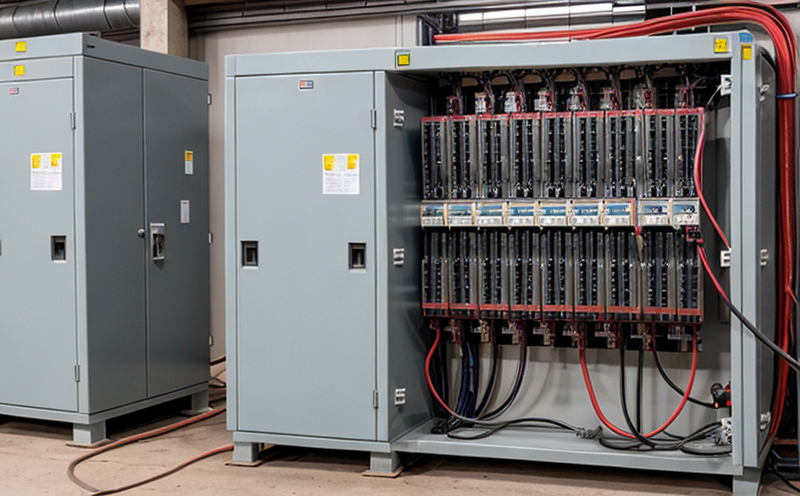ISO 55001 Asset Management System Testing for Transformers
The implementation of ISO 55001 in asset management systems for transformers is crucial for organizations aiming to optimize their maintenance strategies and enhance operational efficiency. This standard provides a robust framework that integrates risk-based decision-making processes, lifecycle cost analysis, and performance monitoring into the management of assets.
ISO 55001 focuses on strategic, organizational, and technical aspects of asset management, ensuring that all stakeholders have visibility over asset performance and compliance with regulatory requirements. For transformers, which are critical components in power distribution networks, this standard ensures that every aspect from design to decommissioning is managed effectively.
The testing process for ISO 55001 compliance involves several key steps: initial assessment, plan development, implementation, review, and continuous improvement. Each of these stages requires meticulous planning and execution to ensure the system's effectiveness. The initial assessment identifies current practices and gaps against ISO 55001 requirements. Following this, a detailed action plan is created to address any deficiencies identified.
During implementation, organizations must integrate asset management processes into their day-to-day operations. This includes establishing metrics for performance measurement, setting up monitoring systems, and training staff on new procedures. Regular reviews are essential to ensure that the system remains effective over time. Continuous improvement ensures that lessons learned from past audits and operational experiences are incorporated back into the system.
The testing process also involves auditing internal processes against ISO 55001 guidelines. This helps identify non-conformities early, allowing for corrective actions before they escalate into significant issues. Organizations may use external auditors or conduct self-assessments to maintain compliance with this standard.
For transformers specifically, the testing focuses on several critical areas including but not limited to electrical performance, insulation integrity, mechanical stability, and environmental impact considerations throughout its lifecycle. Electrical tests ensure that transformers operate efficiently while maintaining safety standards. Insulation checks help prevent breakdowns which could lead to costly disruptions or even fires. Mechanical evaluations assess structural soundness ensuring longevity and reliability.
Maintaining compliance with ISO 55001 can provide numerous benefits including reduced downtime, lower maintenance costs, improved asset utilization rates, enhanced workforce safety, and better environmental sustainability practices. By adhering to these standards, organizations demonstrate their commitment to best practices in asset management which enhances reputation among clients and stakeholders.
The testing process for ISO 55001 compliance is comprehensive yet structured, providing a roadmap towards achieving optimal asset performance while minimizing risks associated with under-maintenance or over-maintenance scenarios. Through rigorous evaluation techniques such as audits, inspections, and continuous monitoring, organizations can ensure they remain compliant with this globally recognized standard.
Why Choose This Test
- Ensures compliance with internationally recognized best practices in asset management.
- Promotes strategic thinking and long-term planning for optimal resource utilization.
- Reduces risks associated with poor asset condition or improper maintenance schedules.
- Facilitates better decision-making through data-driven insights into asset performance.
- Enhances reputation among clients and stakeholders by demonstrating commitment to high standards.
- Paves the way for greater market opportunities due to enhanced operational reliability and sustainability practices.
- Supports continuous improvement initiatives aimed at achieving even higher levels of efficiency and effectiveness.
International Acceptance and Recognition
The ISO 55001 standard has gained widespread acceptance across various sectors globally, including power & utilities. Many countries have adopted or are in the process of adopting this standard due to its comprehensive approach to asset management.
- Australia: The Australian government recognizes ISO 55001 as a key framework for managing public sector assets efficiently and sustainably.
- United Kingdom: The UK's National Infrastructure Commission recommends using ISO 55001 when developing infrastructure projects involving critical assets like transformers.
- European Union: Several EU member states have incorporated elements of ISO 55001 into national policies related to infrastructure management.
The high level of acceptance and recognition indicates that organizations choosing this test are making a strategic investment in their future. It signals commitment to international standards, thereby fostering trust among partners and clients worldwide.
Competitive Advantage and Market Impact
Implementing ISO 55001 asset management systems can give organizations significant competitive advantages by setting them apart from competitors who do not adhere to such stringent practices. Here’s how:
- Cost Efficiency: By identifying inefficiencies early, organizations can avoid unnecessary expenditures and optimize spending on maintenance activities.
- Better Reputation: Demonstrating compliance with global standards enhances an organization's reputation, making it more attractive to customers and partners alike.
- Innovation Leadership: Adapting to new regulatory landscapes and best practices ensures organizations stay ahead in innovation and technological advancements within their industry.
- Regulatory Compliance: Meeting international standards helps companies navigate complex legal environments confidently, reducing the risk of non-compliance penalties.
In today's fast-paced business environment, staying competitive requires more than just meeting basic operational needs; it necessitates proactive measures that ensure long-term success. Adopting ISO 55001 aligns with these goals by providing a roadmap for sustainable growth and continuous improvement.





